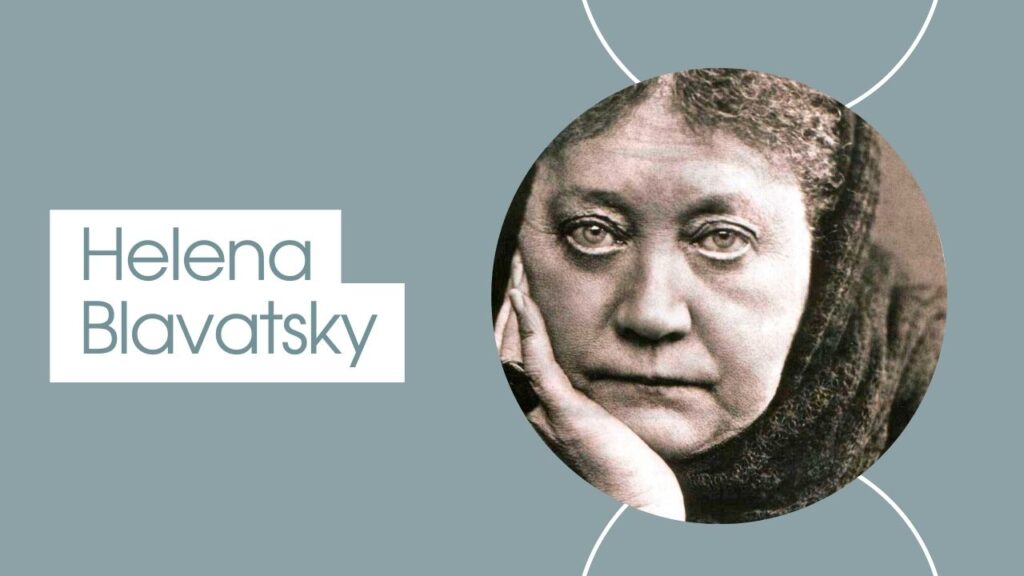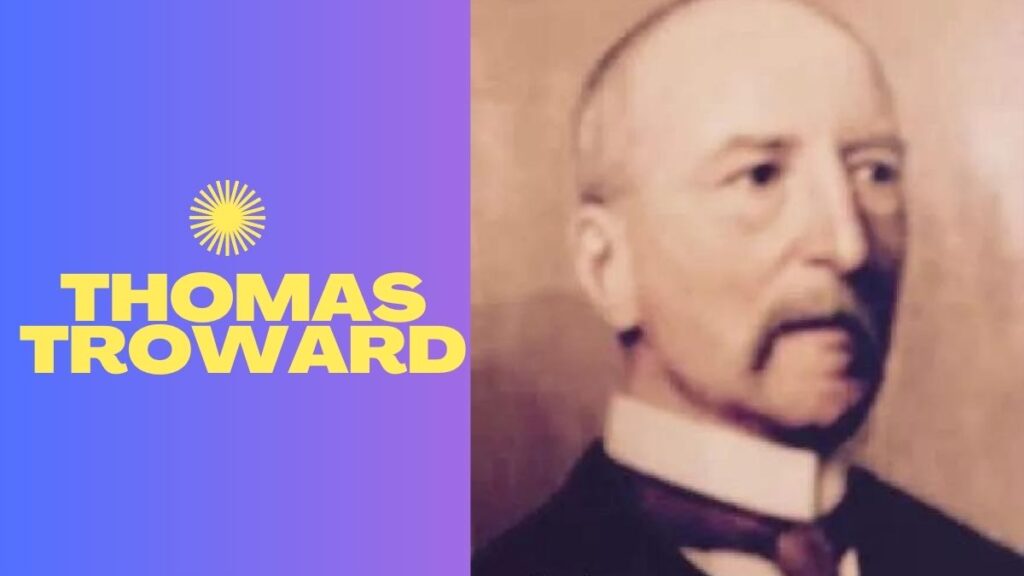The roots of the Law of Attraction can be found in various ancient practices and Eastern teachings, although it wasn’t explicitly referred to as such in ancient times. Buddhist writings and Christian teachings alluded to its principles. For instance, the Buddha famously stated that our thoughts shape our being, while Jesus implied our limitless power to create.
It is widely believed that because the Law of Attraction has always determined the course of our lives, humanity has always carried some awareness of it (even if only subconsciously). However, the phrase ‘Law of Attraction’ didn’t come into use until the work of Madame Helena Blavatsky.
The 19th century marked the emergence of the New Thought tradition and introduced concepts like manifestation to the public consciousness. Notably, Helena Blavatsky and Thomas Troward played significant roles in this period.
Helena Petrovna Blavatsky

During the 19th century, Helena Blavatsky gained a reputation for her spiritual prowess and imparted guidance across various countries. Drawing on ancient religious traditions, she authored “The Secret Doctrine,” which intersected with what we now know as the Law of Attraction.
Blavatsky emphasized that our thoughts about ourselves and our identity define our capabilities and shape reality. Her teachings resonate with contemporary manifestation practices.
Helena famously said:
- “The Universe is worked and guided from within outwards.”
- “What writes history is the power of ideas. And every moment offers the potential to write something new.”
- “Do not be afraid of your difficulties. Do not wish you could be in other circumstances than you are. For when you have made the best of an adversity, it becomes the stepping stone to a splendid opportunity.”
- “Neither success nor safety is to be found outside self-development.”
Thomas Troward

Thomas Troward, often described as a “mystic Christian,” significantly influenced modern Law of Attraction monographs, including “The Secret.” Like Blavatsky, Troward believed in combining teachings from various spiritual traditions for optimal learning.
His famous quotes include:
- “My mind’s a centre of divine operations.”
- “Belief in limitation is the one and only thing that causes limitation.”
- “We cannot really think in one way and act in another.”
- “The secret to enjoying life is to take an interest in it.”
Following the pioneering works of Blavatsky and Troward, the early 20th century witnessed a surge in Law of Attraction literature. Many authors offered unique perspectives on manifestation, often citing personal success stories. Notably, several of these authors contributed language and concepts that continue to shape Law of Attraction practices today, such as:
1906 – William Walker Atkinson

William emphasized the importance of strengthening willpower, improving focus, and developing magnetism to attract positivity into one’s life. He authored over 100 books and aimed to spread awareness of manifestation through his writing and collaborations with practising Hindus.
His teachings, rooted in Hindi spiritual traditions, continue to influence contemporary Law of Attraction practices, particularly regarding vibration enhancement.
Some of his famous sayings are:
- “The secret of success is to try always to improve yourself no matter where you are or what your position is. Learn all you can. Don’t see how little you can do, but how much you can do.”
- “Permit each man to think according to his light.”
- “All persons ought to practice their visualizing power. This will react upon perception and make it more definite. Visualizing will also form a brain habit of remembering things pictorially, and hence more exactly.”
- “We generally see that for which we look.”
1910 – The Science Of Getting Rich By Wallace Delois Wattles

Wallace, renowned for his book “The Science of Getting Rich,” sparked a renewed interest in the Law of Attraction in 1910. His work continues to captivate contemporary audiences. Wattles advocated for individuals to develop their own manifestation potential rather than relying solely on expert teachings. He stressed the importance of creative visualization, which remains a fundamental aspect of Law of Attraction practices.
He said:
- “No man is born incapable of growth.”
- “Go on in a certain way, and if you do not receive that thing, you will receive something so much better that you will see that the seeming failure was really a great success.”
- “Do all the work you can do, every day, and do each piece of work in a perfectly successful manner; put the power of success, and the purpose to get rich, into everything that you do.”
- “By thought, the thing you want is brought to you; by action you receive it.”
1937 – Think And Grow Rich By Napoleon Hill

Napoleon Hill’s book, “Think and Grow Rich,” published in 1937, presented Law of Attraction techniques based on his personal experiences overcoming adversity. Hill drew inspiration from writers like Ralph Waldo Emerson, rather than religious teachers.
He highlighted the connection between negative thinking and attracting negativity, emphasizing the belief in one’s potential as a catalyst for abundance. Hill also encouraged readers to discover their life purpose and work towards it.
He observed:
- “Whatever the mind can conceive and believe, it can achieve.”
- “You are the master of your destiny. You can influence, direct and control your own environment. You can make your life what you want it to be.”
- “If you can’t do great things, do small things in a great way.”
- “A quitter never wins and a winner never quits.”
In the mid to late 20th century. Jerry and Esther Hicks, known for channelling messages from non-physical beings, rose to prominence in the 1980s. Esther Hicks’ books, collectively known as “The Teachings Of Abraham,” provide accessible explanations of the Law of Attraction principles.
Additionally, Louise Hay, a prominent New Thought writer, played a significant role in popularizing affirmations to support the Law of Attraction goals. These authors emphasized the power of positive self-concept and self-compassion in increasing manifestation abilities.
Other notable authors during this period include Richard Weiss and W. Clement Stone. Stone co-authored works on attracting success with Napoleon Hill, while Weiss linked the Law of Attraction to the principle of non-resistance, which suggests that actively resisting things can attract them.
Rhonda Byrne

Rhonda Byrne’s book and film, “The Secret,” catapulted the Law of Attraction from niche interest to worldwide fame in the 21st century. Featuring the insights of various Law of Attraction practitioners, including Marie Diamond, Joe Vitale, and Jack Canfield, “The Secret” emphasizes goal setting, negativity reflection, and new thought patterns as crucial components of manifestation.
It promotes the belief that the Law of Attraction is accessible to all, not just experts or spiritually evolved individuals.
“The Secret” achieved tremendous success, selling over 20 million copies and receiving endorsements from celebrities like Will Smith, Oprah Winfrey, and Conor McGregor, who credited the Law of Attraction for his victories.
College students should consider using the Law of Attraction to harness their thoughts and beliefs to manifest academic success, personal growth, and a positive college experience. Unleash your potential with the Law of Attraction at SMS Varanasi’s Centre for Spiritualism and Human Enrichment. Join now!





